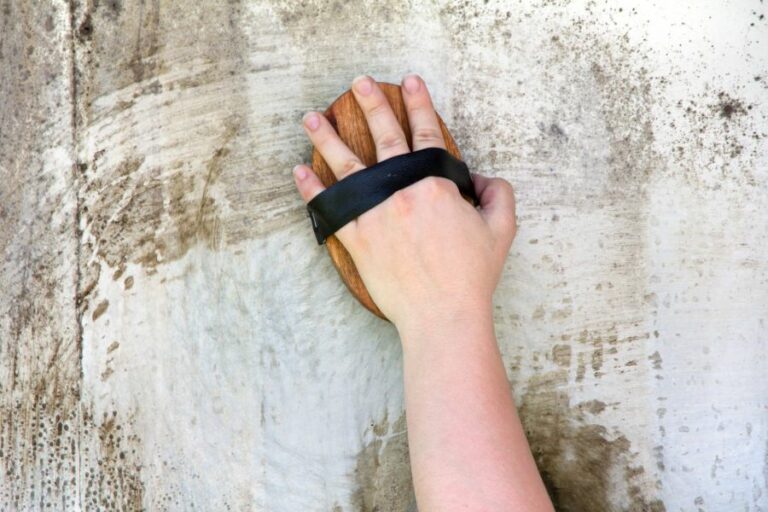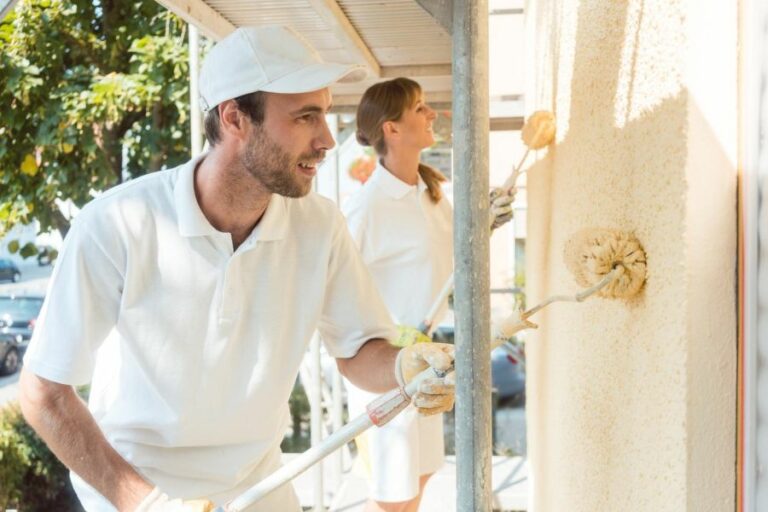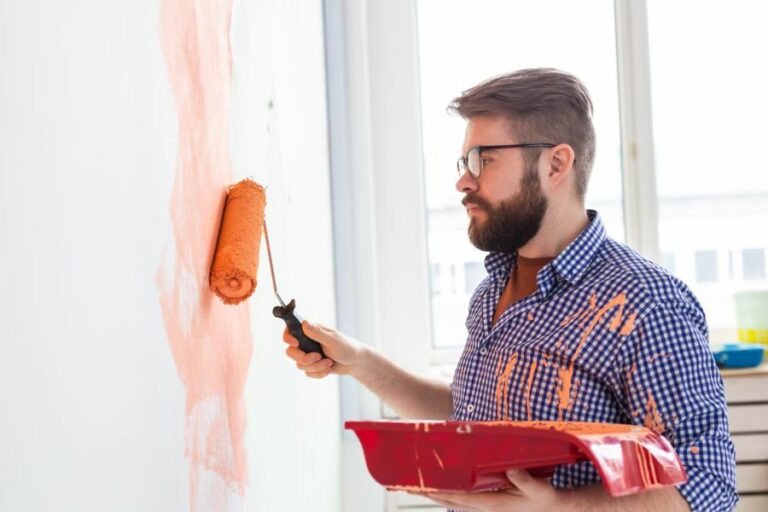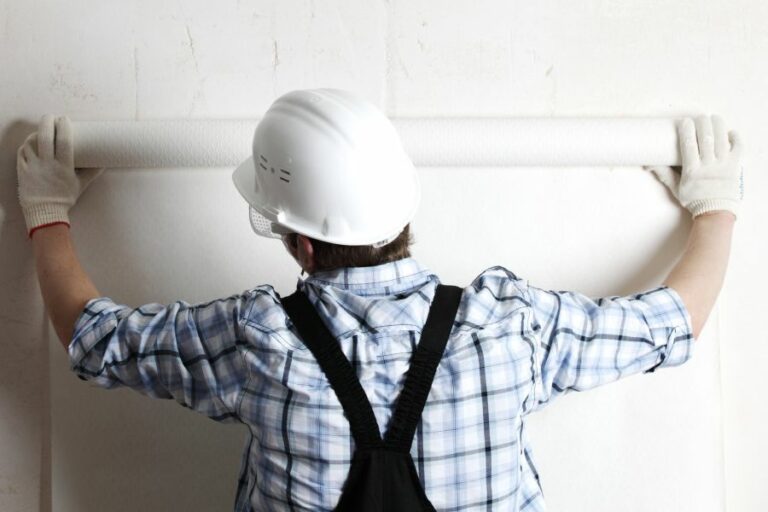Top Tools For Effective Surface Preparation. What Pros Say
When it comes to achieving professional and immaculate finishes, surface preparation is key. You’re in the right place, as we have compiled a list of top tools available to help you efficiently prep surfaces for your projects. With our expertise and extensive knowledge in this area, we guarantee you’ll get the best possible results.
Top tools for effective surface preparation:
Top tools for effective surface preparation include pressure washers for cleaning exterior surfaces, hand tools like scrapers, putty knives, and wire brushes for removing loose materials, sanding tools such as orbital and belt sanders for smoothing surfaces, chemical strippers for removing coatings, etching solutions for preparing mineral-based surfaces, and vacuum cleaners or dust collectors for maintaining a clean work area.

Explore the most efficient and powerful tools for excellent surface preparation! Uncover tips, tricks, and best practices to ensure a perfect surface for coating or painting. Read on and make your next project a success!
Contents
- 1 Best Tools to Achieve Efficient Surface Preparation
- 2 Essential Tools and Equipment for Surface Preparation
- 3 Most Popular Technique for Surface Preparation
- 4 An Overview of Surface Preparation Methods
- 5 Surface Preparation Tools and Equipment for Ships
Best Tools to Achieve Efficient Surface Preparation
A smooth and well-prepared surface is essential for achieving a high-quality finish in any painting or coating project.
• Pressure Washers
Pressure washers are a powerful tool in surface preparation, particularly for cleaning exterior surfaces like concrete and wood. They use a high-pressure water spray to remove dirt, loose paint, mold, and mildew. Pressure washers can save time and effort compared to manual scrubbing or sanding.
I recommend investing in a reliable and sturdy pressure washer for larger surface preparation projects.
• Hand Tools: Scrapers, Putty Knives, and Wire Brushes
Hand tools like scrapers, putty knives, and wire brushes are essential for removing loose paint, rust, and debris from a surface. Scrapers and putty knives are effective at chiseling away loose material, while wire brushes can be used to clean and smooth irregular surfaces.
These tools are relatively affordable and are a must-have for any surface preparation toolbox.
• Sanding Tools
Sanding is a critical step in surface preparation to create a smooth, even surface to which paint or other coatings can adhere. Different types of sanding tools are available, depending on the surface material and the intended finish.
– Orbital Sanders
Orbital sanders are electric-powered tools that use a circular sanding motion. They are suitable for wood, plastic, and metal surfaces and provide a smooth, even finish. Orbital sanders can be used with a range of sandpaper grits to achieve the desired finish.
– Belt Sanders
Belt sanders are another electrically powered option, utilizing a continuous loop of sandpaper for faster and more aggressive sanding. They are suitable for large surface areas, like floors, decks, and tabletops. However, they can be challenging to control and may cause damage if not used carefully.
– Hand Sanding
Hand sanding using sandpaper or sanding blocks is ideal for small or intricate surfaces where more control is needed. Hand sanding ensures precision and attention to detail that may not be possible with power sanders.
• Chemical Strippers
Chemical strippers are used for removing paint, varnish, or other coatings from surfaces. These chemicals can quickly dissolve and lift old paint, making it easy to scrape or wash away. There are several types of chemical strippers available, including solvent-based, caustic, and bio-based products.
When using chemical strippers, it is essential to follow the manufacturer’s instructions and safety guidelines.
• Etching Solutions
Etching solutions are used to prepare concrete, masonry, and other mineral-based surfaces for painting or coating. These solutions, often containing muriatic or phosphoric acids, work by reacting with the surface to create a rough texture, improving the adhesion of the paint or coating.
When working with etching solutions, it is crucial to follow safety precautions, including wearing protective clothing, gloves, and eyewear.
• Vacuum Cleaners and Dust Collectors
Proper cleaning of the work area is an essential step in surface preparation. Vacuum cleaners and dust collectors help remove any dust, dirt, and debris generated during surface preparation.
This ensures a clean, dust-free surface for painting or coating application. Some sanding equipment even comes with built-in dust collection systems for more efficient cleanup.
• In Conclusion
Thorough and proper surface preparation is key to a successful and long-lasting paint or coating application.
Utilizing the tools discussed above, pressure washers, hand tools, sanding tools, chemical strippers, etching solutions, and vacuum cleaners will help you achieve a professional and high-quality finish on any surface. Happy painting!
Tool | Description |
|---|---|
Wire brush | A tool with bristles made of steel wires, used to clean rough surfaces and remove rust, paint, or other coatings. |
Scraper | A flat, metal tool with a sharpened edge used to remove paint, rust, or other coatings from a surface. |
Sanding block | A handheld tool used to sand and smooth surfaces by rubbing sandpaper against the surface. |
Sandblaster | A high-powered tool that uses compressed air to spray abrasive particles against a surface, removing paint, rust, and other contaminants. |
Power washer | A mechanical sprayer that uses high-pressure water to clean and remove dirt, grime, and loose paint from surfaces. |
Grinder | A handheld power tool with a rotating disc that can be fitted with various attachments for sanding, polishing, and grinding surfaces. |
Chemical stripping agents | Chemicals used to break down and remove paint, rust, and other coatings from surfaces. |
Scuff pad | A non-woven abrasive pad used for scuffing or finishing surfaces. |
Essential Tools and Equipment for Surface Preparation
Surface preparation is a crucial step in many industries, such as construction, painting, flooring, and more. The right equipment will ensure that surfaces are clean, smooth, and ready for the application of coatings or other treatments.
• Abrasive Blasting Equipment
Abrasive blasting is one of the most common methods for surface preparation. It involves projecting a high-pressure stream of abrasive material onto the surface to remove contaminants and roughen or smooth the surface.
– Sandblasters
Sandblasters are the most well-known type of abrasive blasting equipment. They use compressed air to propel a mixture of sand and air onto the surface, removing rust, scale, paint, and other contaminants.
Sandblasters come in various sizes and types, such as siphon-feed, pressure-feed, and gravity-feed systems. I recommend investing in a pressure-feed sandblaster, as they often provide better control and efficiency.
– Soda Blasters
Soda blasters use sodium bicarbonate (baking soda) as the abrasive material. This method is gentler than sandblasting, making it suitable for softer surfaces or delicate restoration projects. Soda blasting is especially useful for removing grease, oil, and paint without damaging the underlying surface.
– Shot Blasters
Shot blasters use small steel beads, called “shot,” to clean and profile surfaces. This method is ideal for preparing concrete floors for coatings or for removing old coatings and sealers.
Shot blasting leaves a clean and rough surface that improves the bonding of new coatings or adhesives. For concrete floor preparation, using a walk-behind shot blaster is highly recommended.
• Scarifying Equipment
Scarifying machines use rotating cutting wheels to remove coatings, level uneven surfaces, and clean concrete or asphalt.
They are commonly used in floor preparation or road repair projects. Some scarifying machines are also capable of milling or grooving the surface, making them versatile tools for surface preparation.
– Planers
Planers, also known as milling machines, work similarly to scarifiers. They use rotating cutting drums to remove a thin layer of material from the surface, creating a smoother, more uniform finish. Planers are often used to remove old coatings, correct surface imperfections, and improve the texture of the surface.
• Grinding Equipment
Grinding machines use rotating abrasives to smooth and clean surfaces. They are an important tool for many surface preparation tasks, including removing coatings and contaminants, leveling uneven surfaces, and polishing concrete floors.
– Handheld Grinders
Handheld grinders, also known as angle grinders, are versatile and portable solutions for surface preparation tasks. With the appropriate disc attachments (diamond, abrasive, or wire brush), handheld grinders can remove contaminants, grind or polish surfaces, and even cut materials.
A variable-speed grinder is a useful addition to your surface preparation toolkit, as it allows precise control over different tasks.
– Floor Grinders
Floor grinders are larger and more powerful machines that can cover a broader surface area. They are commonly used to prepare concrete floors for coatings, remove adhesives and sealers, or polish the surface to a high shine.
When selecting a floor grinder, consider factors such as power source (electric, propane, or gas), size, and disc type (single, double, or planetary).
• Pressure Washing Equipment
Pressure washers use high-pressure water jets to clean surfaces and remove dirt, dust, mold, and mildew. They are an essential tool for cleaning large surfaces, such as building exteriors, sidewalks, and parking lots.
Pressure washers are available in various sizes and pressure ratings, with gas-powered models typically offering higher pressure and flow rates for larger projects.
• Vacuum and Filtration Systems
Proper dust control and waste management are essential for any surface preparation project, both for worker safety and compliance with regulations. Implementing high-quality vacuum and filtration systems will ensure a clean and safe working environment.
– Dust Extractors
Dust extractors, also known as dust vacuums, are designed to capture airborne particles and dust generated during surface preparation tasks. They can be connected directly to equipment, such as sandblasters and grinders, to provide continuous and efficient dust collection.
– Air Scrubbers
Air scrubbers are used to remove contaminants and odors from the air, improving overall air quality in a workspace. They use HEPA filters and activated carbon filters to capture dust, mold spores, VOCs, and other airborne pollutants.
• Conclusion
Effective surface preparation requires the right equipment for each task. By investing in high-quality abrasive blasting, scarifying, grinding, pressure washing, and dust control equipment, you can ensure a smooth, clean, and safe work environment.
Most Popular Technique for Surface Preparation
Surface preparation plays a crucial role in determining the final result of any application. It is a fundamental step in ensuring optimal adhesion, bonding, and appearance of coatings, paints, and other finishes.
• Understanding Abrasive Blasting
Abrasive blasting, also known as sandblasting or grit blasting, is the process of forcibly propelling a stream of abrasive material against a surface.
This high-velocity impact cleans and roughens the surface, effectively removing contaminants, such as rust, scale, paint, or dirt, and creating a suitable profile for subsequent coating application.
The effectiveness of abrasive blasting depends on factors such as the type of abrasive used, the blasting pressure, and the angle at which the abrasive stream impacts the surface.
Each of these factors can be adjusted to cater to specific surface preparation requirements, making abrasive blasting a versatile and efficient surface preparation technique.
– Advantages of Abrasive Blasting
- Speed and Efficiency: Abrasive blasting can cover large areas in little time. The high-velocity stream of abrasive particles effectively removes contaminants and creates surface profiles quickly, saving time and labor costs.
- Versatility: With numerous options for abrasive material, pressure, and angle settings, abrasive blasting can be tailored to different surfaces and specific requirements. This adaptability also makes it suitable for various applications, such as automotive and aerospace industries, shipbuilding, steel structures, and more.
- Improved Adhesion: The surface profile created after abrasive blasting enhances the bond between the substrate and the applied coating, reducing the chances of delamination or peeling.
- Environmentally Friendly: By using eco-friendly abrasives, such as recycled glass or corn cob, and employing proper dust containment measures, abrasive blasting can be an environmentally-friendly and sustainable surface preparation technique.
• Types of Abrasive Blasting
There are several types of abrasive blasting techniques, each with its unique benefits and applications. Let’s explore some of the most prominent ones.
1. Dry Abrasive Blasting
Dry abrasive blasting involves using compressed air to propel abrasive particles toward the surface. It is ideal for the removal of rust, paint, and other contaminants from various surfaces, such as metal, concrete, and wood.
Dry blasting is also useful for creating anchor patterns or roughening surfaces for better adhesion of coatings.
When using dry abrasive blasting, it is crucial to keep in mind the need for dust management and control, as it can generate significant airborne dust. Some common dust control systems include baghouses, cartridges, and cyclones.
2. Wet Abrasive Blasting
Wet abrasive blasting, sometimes referred to as vapor blasting or slurry blasting, combines water with abrasive particles, reducing airborne dust and providing a more gentle option for surface preparation.
The water cushion created in this process reduces the impact of abrasives on the surface, decreasing the chances of substrate damage.
Wet abrasive blasting is particularly beneficial for delicate surfaces, such as automotive parts, machinery components, and glass, where strict control of anchor pattern depth and surface texture is required.
3. Vacuum Blasting
Vacuum blasting, also known as dust-free or closed-loop blasting, employs a unique system whereby the abrasive stream is contained within a closed circuit. This minimizes waste and dust generation, providing a cleaner and safer working environment.
Vacuum blasting is ideal for situations where contamination and dust must be controlled, such as in confined spaces or when working with hazardous materials, such as lead-based paint.
• Recommendations for Choosing the Right Abrasive Blasting Method
When selecting an abrasive blasting technique, consider the following factors:
- Surface Material: The choice of abrasive blasting method depends on the substrate’s material, sensitivity, and tolerance to abrasion.
- Surface Contamination: The nature and extent of contamination, such as rust, paint, or oil, play a significant role in determining the appropriate abrasive blasting technique.
- Desired Surface Profile: Surface preparation requirements, such as profile depth and roughness, must be considered when selecting an abrasive type and pressure.
- Environmental Restrictions: Wet abrasive blasting and vacuum blasting are suitable methods for minimizing dust, especially when working in confined spaces or with hazardous materials.
- Cost and Time Efficiency: Choose a method that provides optimal results within your budget and time constraints.
• Conclusion
Abrasive blasting is a powerful and versatile surface preparation technique, offering significant benefits in terms of speed, efficiency, versatility, and improved adhesion.
By understanding the different types of abrasive blasting methods and considering factors such as surface material, contamination, and desired outcomes, you can select the most appropriate method for your specific needs.
An Overview of Surface Preparation Methods
Surface preparation is a crucial step in ensuring the success and longevity of various applications, such as painting, coating, and adhesive bonding. Proper surface preparation can significantly enhance the adhesion, appearance, and durability of the final product.
• Mechanical Surface Preparation Techniques
Mechanical techniques involve physically altering the substrate to improve its surface properties.
– Abrasive Blasting
Abrasive blasting or sandblasting is a process where an abrasive material is forcibly propelled against a surface under high pressure. This technique efficiently removes contaminants, rust, and old coatings to achieve the desired level of cleanliness and roughness.
There are several types of abrasive blasting, including:
- Dry Abrasive Blasting
- Wet Abrasive Blasting
- Dustless Blasting.
I recommend dustless blasting as it is an environmentally-friendly option that generates less dust and waste compared to traditional methods.
– Abrasive Grinding and Sanding
Grinding and sanding are cost-effective methods to remove old coatings or contaminants and create a uniform surface profile. Equipment such as angle grinders, belt sanders, and disc sanders can be used for this purpose.
However, these techniques might not be suitable for delicate or complex surfaces due to their aggressive nature.
– Shot Peening
Shot peening is a process in which tiny spherical media, such as steel or ceramic balls, are blasted at high velocity onto a surface. This method not only cleans and roughens the surface but also introduces compressive stresses that can improve fatigue life and resistance to stress corrosion cracking.
• Chemical Surface Preparation Techniques
Chemical techniques involve using solvents, acids, or other chemical agents to clean, etch, or modify the surface properties.
– Solvent Cleaning
Solvent cleaning involves using organic solvents, such as acetone, alcohol, or xylene, to remove contaminants like oil, grease, or dirt. This method is relatively easy and inexpensive, but it may not create a sufficiently rough surface for some applications, such as high-performance coatings.
– Acid Etching
Acid etching is a technique that uses strong acids, such as hydrochloric, sulfuric, or phosphoric acid, to dissolve contaminants and rust and to create a rough surface profile. This method is effective for concrete and metal surfaces but can be hazardous to both the operator and the environment.
– Alkaline Cleaning
Alkaline cleaning employs high-pH detergents or cleaners to remove organic and inorganic contaminants. This method is often used in conjunction with mechanical methods or as a pre-treatment step.
Alkaline cleaning is more environmentally friendly as compared to acid etching but may require thorough rinsing to avoid residue that could interfere with the adhesion process.
• Non-Chemical and Non-Mechanical Techniques
These techniques do not involve the use of chemicals or mechanical actions, offering alternatives for specific applications.
– Plasma Treatment
Plasma treatment involves using highly reactive, ionized gas to modify the surface properties of a substrate. This technique can effectively clean, activate, or etch the surface without the use of hazardous chemicals or damaging substrates.
Plasma treatment is suitable for a wide range of materials, including polymers, metals, and ceramics.
– Laser Ablation
Laser ablation is a process that uses powerful, focused laser beams to selectively remove contaminants, coatings, or substrate material. This technique can create highly precise surface profiles without damaging the underlying surface.
Laser ablation is commonly used in applications requiring extreme precision, such as aerospace, electronics, and medical device manufacturing.
• Recommendations and Considerations
When selecting a surface preparation technique, it is essential to consider various factors, including the substrate material, type of contaminants, desired surface profile, and application requirements. Some general recommendations from personal experience include:
- For heavy-duty applications, such as marine or industrial coatings, abrasive blasting is an excellent choice.
- For precision applications or delicate surfaces, plasma treatment or laser ablation might be more suitable.
- For general applications or simple substrates, grinding, sanding, or solvent cleaning can provide satisfactory results.
Moreover, always prioritize safety and environmental concerns when choosing surface preparation techniques. Using eco-friendly methods, proper personal protective equipment, and adhering to local regulations can ensure a successful and responsible surface preparation process.
Technique | Description |
|---|---|
Cleaning | Removal of dirt, grease, and other contaminants from the surface |
Abrasive Blasting | Use of high-velocity particles to clean and roughen the surface for better adhesion |
Chemical Etching | Application of chemicals to alter the surface texture and promote adhesion |
Grinding | Use of abrasive tools to smooth or roughen the surface for better adhesion |
Sanding | Manual or mechanical process of removing surface irregularities by rubbing with abrasive materials |
Primers | Application of a coating to improve adhesion and provide a uniform base for paint. |
Surface Preparation Tools and Equipment for Ships
Surface preparation is a crucial process for maintaining the ship’s structure and prolonging its service life. By eliminating rust, dirt, and other contaminants, surface preparation enhances the adhesion of coatings and ensures optimum performance.
• Mechanical Tools for Surface Preparation
– Hand Tools
Hand tools, such as wire brushes, scrapers, and sandpaper, are the most basic equipment used for surface preparation. They are suitable for small-scale jobs or when powered tools and equipment are not available.
- Wire Brushes: Ideal for removing loose rust, flaking paint, and other surface impurities. For best results, use stainless steel wire brushes to avoid leaving rust stains.
- Scrapers: A flat scraper is useful for removing hard, brittle coatings or layers of rust. Use a triangular scraper to clean corners and tight spaces.
- Sandpaper: Suitable for smoothing rough surfaces, sanding is recommended after scraping or brushing to ensure an even surface for paint or coatings application.
– Powered Tools
Powered tools are more efficient than hand tools, allowing for quicker and more effective surface preparation.
- Grinders: Equipped with wire wheels or abrasive discs, grinders can be used to remove rust and old coatings, as well as to grind down weld seams or rough surfaces. Angle grinders are commonly used on board ships due to their versatility, while straight grinders are better suited for smaller, hard-to-reach areas.
- Needle Scalers: Using a chisel or needle-like attachments, needle scalers are designed to chip away rust and old paint from surfaces. They work best on uneven surfaces, such as along stiffeners or in the bilge area.
- Rotary Sanders: Thanks to their use of abrasive discs or belts, rotary sanders are capable of quickly sanding down surfaces, making them suitable for large-scale rust removal and surface smoothing tasks.
• Abrasive Blasting
Abrasive blasting, also known as sandblasting, is a highly effective method for surface preparation on board ships. It involves propelling abrasive particles at high velocities against the surface, which removes rust, old paint, and other contaminants.
– Dry Abrasive Blasting
Dry abrasive blasting is the most common type of abrasive blasting used on ships. It can be performed using a variety of abrasive media, including sand, steel grit, or garnet. The choice of abrasive depends on the desired surface finish and the coating that will be applied.
– Wet Abrasive Blasting
Wet abrasive blasting combines water with abrasive media, resulting in a slurry that is sprayed onto the surface. This method is less dusty than dry blasting and can help reduce the risk of damage to sensitive equipment or structures.
– Vacuum Blasting
With vacuum blasting, a vacuum head is attached to the blasting nozzle, which collects dust and debris generated during the blasting process. This type of blasting is ideal for use in confined spaces or when strict environmental regulations must be followed.
• Chemical Cleaning
Chemical cleaning can be used in specific situations, such as removing marine growth, paint layers or rust. It involves applying chemical agents, such as acids or alkali-based cleaners, which react with the contaminants to loosen and dissolve them for easy removal.
However, caution must be exercised when using chemicals for surface preparation, as they may pose health and environmental risks. Following manufacturer guidelines and personal protective equipment is essential when using chemical cleaning methods.
• UHP Water Blasting
Ultra-high-pressure (UHP) water blasting is an effective and environmentally friendly method of surface preparation. Using pressurized water, UHP blasting can quickly remove contaminants and coatings from surfaces without damaging the underlying material.
UHP water blasting is especially useful for cleaning areas with sensitive equipment, such as the main engine or electrical rooms, as it does not generate dust or abrasive particles.
• In Conclusion
Proper surface preparation on board ships is crucial for maintaining the integrity and prolonging the service life of the vessel. Knowing the different tools and equipment available for surface preparation allows you to choose the most efficient and effective method for your specific requirements.
Whether using mechanical tools, abrasive blasting, chemical cleaning, or UHP water blasting, always ensure that you follow the necessary safety precautions and environmental regulations to ensure a successful and responsible surface preparation process.







